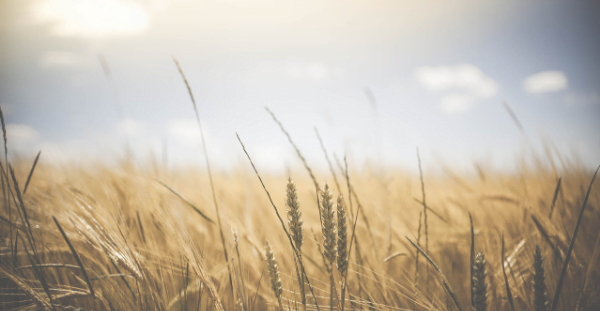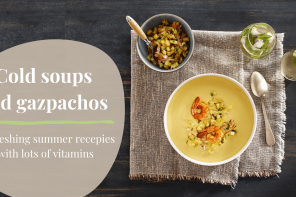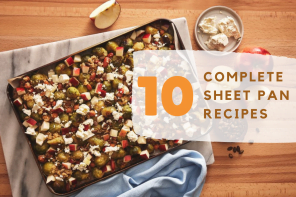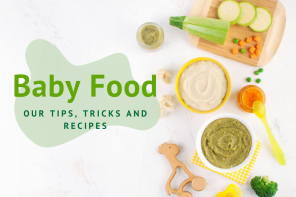Everything you need to know about fibre
Did you know that fibre plays an important role in maintaining a healthy lifestyle? And it’s easier to find in your food than you think.
This is a special article to show you how to get more fibre simply and deliciously.
What is dietary fibre, why is it healthy, where is it found and how can you get more of it? This article will answer all your questions.
What is fibre, anyway?
What’s the difference between soluble and insoluble fibre?
There are 2 types of fibre: soluble and insoluble.
As the name implies, soluble fibre dissolves in water and becomes viscous on contact. Among other things, it helps limit the absorption of fats, bad cholesterol and carbohydrates and consequently prevents cardiovascular disease while controlling blood sugar levels.
Soluble fibre is easier to digest than insoluble fibre and consequently, helps balance intestinal flora while prolonging the feeling of fullness. But it’s still important to drink a lot of water to maximize its benefits.
Insoluble fibre doesn’t dissolve in water. It acts like a little sponge gorging itself with water and supporting satiety and transit. As a result, it’s ideal for helping to control appetite and weight.
So now you can see that both soluble and insoluble fibre are important. Choose according to your body’s needs and the health benefits you’re looking for.
Is fibre healthy?
Fibre is essential for good health. Adequate fibre intake helps reduce cardiovascular disease and diabetes.
But if you suffer from certain medical conditions, such as irritable bowel syndrome, you should prioritize some fibre over others. Ask your doctor for advice on what’s best for you.
Fibre requirements vary from person to person, but here’s an overview.
| Age | Adequate Intake (AI) |
| Babies 0–6 months | N/A |
| Babies 7–12 months | N/A |
| Babies 1–3 years | 19 g |
| Children 4–8 years | 25 g |
| Boys 9–13 years | 31 g |
| Girls 9–13 years | 26 g |
| Boys 14–18 years | 38 g |
| Girls 14–18 years | 26 g |
| Men 19–50 years | 38 g |
| Women 19–50 years | 25 g |
| Men 50 years and more | 30 g |
| Women 50 years and more | 21 g |
| Pregnant women | 28 g |
| Breastfeeding women | 29 g |
| Age | Adequate Intake (AI) |
| Babies 0–6 months | N/A |
* Recommended Dietary Allowance
** UL: Tolerable Upper Intake Level
Source: Passeportsante.net
What foods contain fibre?
Fibre is found in many ingredients, so it’s easy to consume every day. Here’s a chart to help you find fibre in ordinary ingredients.
Fibres solubles | Fibres insolubles |
| Psyllium and fortified cereals | Wheat bran and grains |
| Oat bran and oat cereal (oatmeal) | Whole grains |
| Legumes: kidney beans, peas | Vegetables: cauliflower, kale, green peas, spinach, turnip, green beans |
| Fruit: oranges, grapefruit, mangoes, dried prunes | Fruit: raspberries, apples, pears, bananas, blueberries, strawberries |
| Vegetables: asparagus, Brussels sprouts, carrots, onions, broccoli | Nuts and seeds: almonds, peanuts |
| Barley | Legumes in general |
Source: Passportsante.net
How can I eat more fibre?
Well for starters, find out how much of each food will give you the amount of fibre you need.
Here are a few tips to consuming more fibre without completely changing your diet.
- Add legumes like lentils, chickpeas or kidney beans to soups, dishes and salads.
Adding fibre to your dishes and salads is easy squeezy. Legumes are also a good way to add plant protein to your dishes. If you’re lacking inspiration, check out our chickpea, broccoli and apple salad with caramelized pecans recipe.
Add hummus or avocado to sandwiches
Follow this step-by-step hummus and avocado sandwich recipe for a healthy sandwich to go. Bonus: you can change it up as much as you want.
If you’re like us and just love hummus, read our article on special hummus recipes.
Add dried fruit, flax, sesame, pumpkin or sunflower seeds to your morning bowl of cereal or yoghurt.
Eat fibre first thing in the morning. A simple and tasty start: chia banana yoghurt. It’s fibre guaranteed!
You can also replace store-bought cereal with a bowl of oatmeal.
Discover 8 delicious and diverse oatmeal recipes to mix it up in the morning.
Add dried fruit and nuts to cake mixes.
In addition to adding texture and taste to your cakes, dried fruits and nuts are fabulous friends as fibre food. Here’s a well-known banana bread recipe with a little extra.
Choose whole wheat pasta and breads, which are less refined
Read nutrition labels
Where can you find the fibre on a food label? In the carbs. When buying food, look at the weight and percentage of fibre.
Knowing how to read food labels is key to a healthy balanced diet. Où trouver les fibres sur une étiquette alimentaire? Dans les glucides! Lorsque vous achetez des aliments, regardez le nombre de grammes et le pourcentage de fibres qu’ils contiennent.
Recipe ideas for filling up with fibre
 Veggie Burger |  Veggie Falafels |  Slow cooker veggies for enchiladas |
 Fettucine Alfredo with ham and peas |  Baked bean Jambalaya |  Stuffed quinoa peppers |
Share your tricks on how to fit more fibre in your daily diet and subscribe to our newsletter to get tons of tips and recipe ideas.












